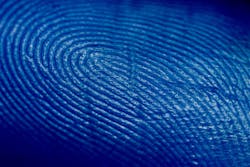Where are the best places to market biometric technologies? It all comes down to money. When an integrator can save their client money and reduce loss, it certainly makes the biometrics sales pitch much easier. Keep in mind that biometrics accuracy has improved markedly in recent years, and biometrics technology continues to become more affordable and accessible.
Preserving Margins
For integrators, it is key to find areas in which biometrics preserves your clients’ revenue streams. When profit margins can be preserved, you can really differentiate your company from your competition.
Health/membership clubs are a prime example. Proprietors charge members a fee for access to amenities such as the golf course, workout room, laundry room, swimming pool, spa, etc., but you know members have friends who they share their membership card with. That is a potential loss of membership fees the proprietor could have normally collected. Having members use biometrics ensures only paying members are accessing amenities.
Reducing Expenses and/or Liabilities & Losses
Payroll or time-and-attendance clocks for customers with hourly-wage employees: Employees who use cards/badges when punching in/out of a time clock can easily defraud their employer by not reporting to work while asking a co-worker to punch in for them — termed “buddy punching.”
Considering payroll often accounts for 10 percent of business operating expenses, preventing buddy punching is paramount when protecting a business’ bottom-line. Installing biometric time clocks can save employers thousands of dollars, depending on how large a work staff they employ.
Retail Shrink: It is hard enough for retailers to grow their business, but even more daunting to reduce “shrink” attributed to both shoplifter and employee theft. With traditional key/card systems, employees can easily gain access to their managers’ keys and subsequently to cash rooms and stock rooms.
By placing biometric readers in front of these high-value rooms, they can limit access and thereby reduce “shrink.” Help your retail clients prevent their goods from walking out of the store.
OSHA compliance: Retail stores operate dangerous equipment (i.e., cardboard balers, forklift truck, freight elevators, etc.). Not only can untrained people get hurt by incorrectly operating this equipment, OSHA also levies heavy fines when they discover unsatisfactory safeguards.
I know a Loss Prevention manager fined $200K by OSHA because someone left the key in the ignition switch of an electric cardboard baler.
Easy fix? Install a biometric in front of each piece of dangerous equipment so that only authorized employees can activate the equipment (and not get their beef/limb accidentally chopped off). The biometric can act as a “kill switch” and prevent unauthorized start-up, thus protecting employees and customers.
Trash loss: Retail stores produce a ton of recyclable material which can be redeemed for money; but too often, employees and customers throw away all their garbage, which is like throwing money out the window. To reclaim this lost revenue, a biometric reader can be installed to authorize use of the trash compactor. This will allow only authorized users to operate the trash compactor and prevent employees from throwing away potential profit.
Other Target Customers & Applications
Retail customers dependent on unassisted delivery: If your clients’ business depends on receiving deliveries after hours, biometric security means they never have to worry about dispatching someone — employee, night watchman, security, guard, etc. — to let in the delivery person. Simply enroll the delivery drivers’ fingerprint(s) into the biometric access control system and restrict the drivers’ door access to associated after-hours time periods. This reduces the cost of manpower.
Pharmacies: Whether caused by employees or external thieves, drug theft is rampant. Biometrics is a great way to prevent unauthorized parties from accessing drug safes. The safe can be programmed only to open after the authorized user presents his valid biometric credential(s) and a drug code. An audit trail of users accessing the safe can subsequently be created and viewed on demand.
ATMs: Card fraud is always in the news and unavoidable. Customers try to hide thier PIN code while punching it into an ATM keypad, but there may be a person eavesdropping. For this reason, many ATM manufacturers are now incorporating biometrics into their ATM machines.
RMR Opportunity
A major reason integrators prefer card access systems is because cards need to be replaced whenever the cards become lost, stolen or damaged. Although biometric credentials cannot be lost, stolen or damaged, there still actually exists RMR opportunities with biometrics.
Biometric credentials need to be enrolled into the access control system, at times removed from the system, copied to multiple readers , etc.; thus, “biometric management” can easily be incorporated into the overall access control management services an integrator offer as a monthly service.
Larry Reed is CEO of ZKAccess. Request more info about the company by visiting www.securityinfowatch.com/12061098.
About the Author

